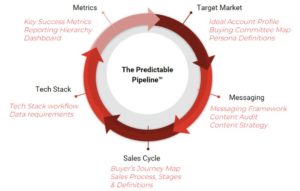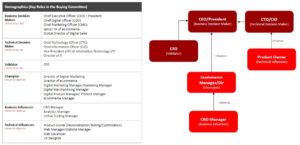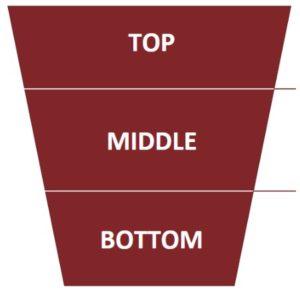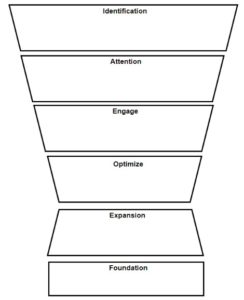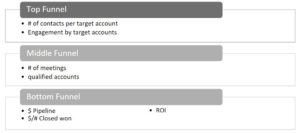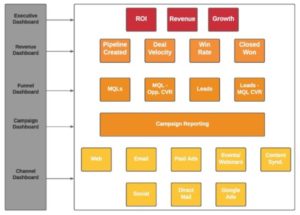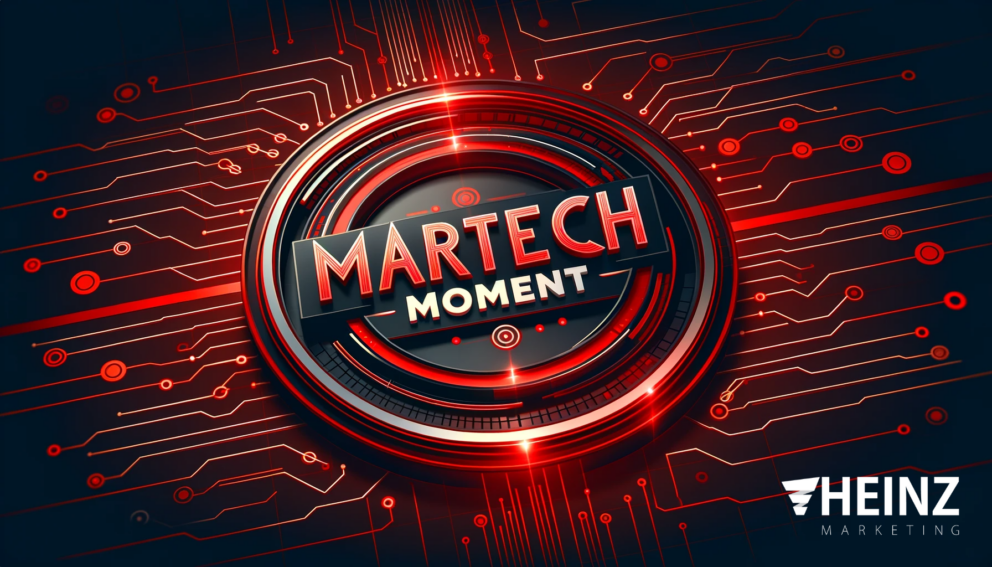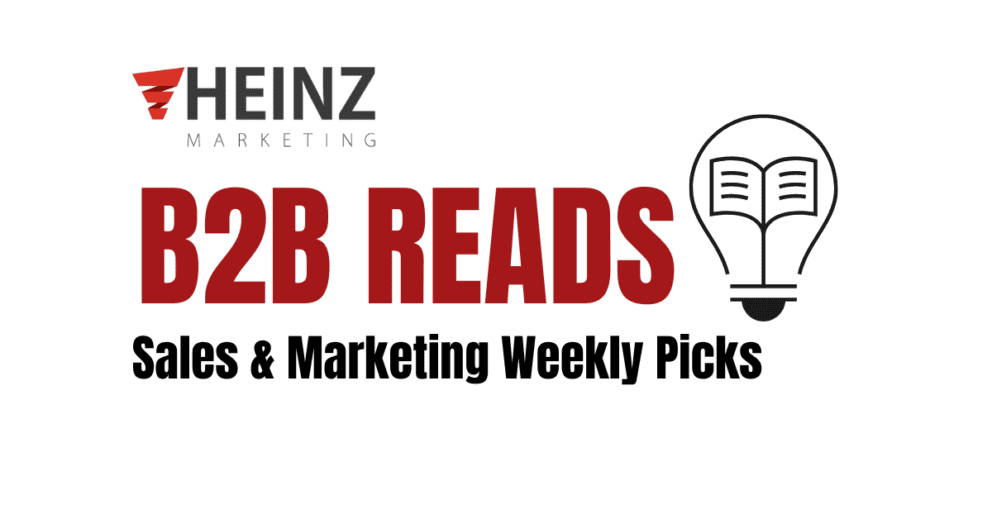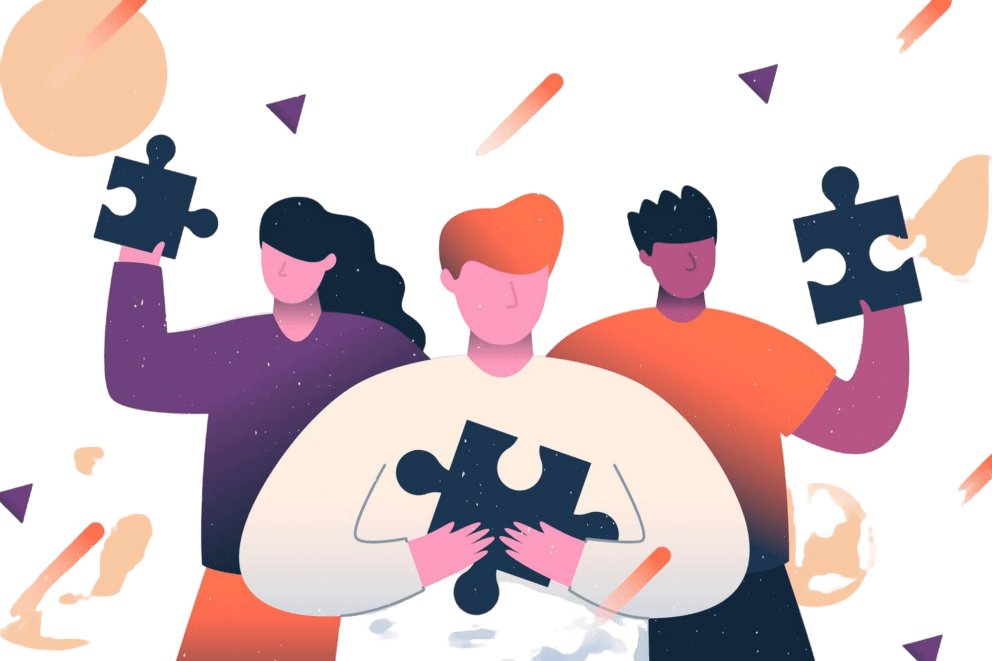Assessing Your Predictable Pipeline for a Strong 2023 Year
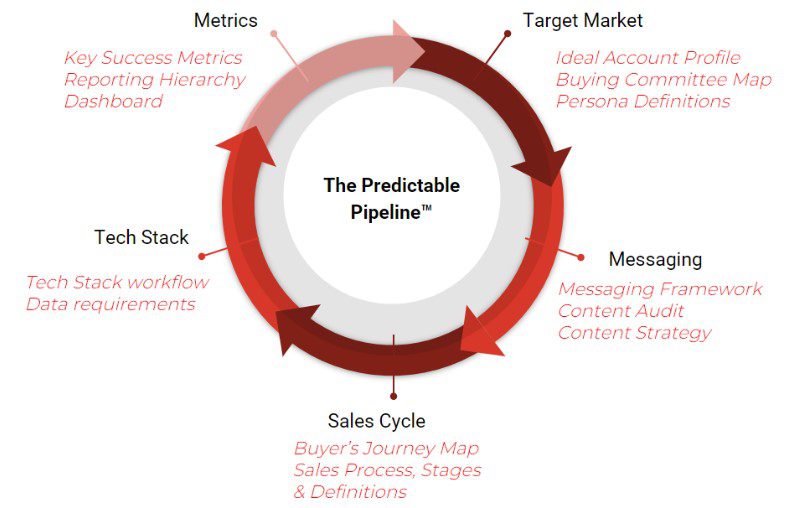
By Carly Bauer, Marketing Consultant at Heinz Marketing
As the 2022 year comes to an end, businesses start strategizing for the coming year. Setting new goals and budgets to figure out how to get out of the trenches built over the last three years from the pandemic and a looming recession. Now is an ideal time to assess internal infrastructures to identify weak spots in order to lay the foundation for strong, effective marketing and sales strategies to make 2023 the ‘come back’ year for your company. Here at Heinz Marketing we specialize in Predictable Pipeline. Our approach enables clients to build immersive customer experiences, accelerate revenue, and create a predictable, profitable pipeline to grow and scale their business. Here are some insights and tips on how you can start assessing your predictable pipeline to make 2023 your ‘come back’ year.
What is a Predictable Pipeline?
The Predictable Pipeline is an integrated strategy to find, reach, and convert prospects into customers that aligns sales and marketing efforts. The outcome is to define business objectives and measurable goals for marketing, integrate and align sales and marketing teams, detail sales enablement into each stage of the sales cycle and maximize B2B marketing for lifetime value, loyalty, and referrals.
The Predictable Pipeline Pillars
There are 5 key pillars that contribute to a predictable pipeline. The Predictable Pipeline Approach leverages these components to help inform data-driven business decisions, making them the foundation to any demand generation or Go-To-Market program.
Target Market
In today’s marketplace, it’s not only about identifying who you want to sell to. It’s about using deep, customer-centric insights to enable buyers, drive engagement, and affirm decision-making through the funnel. Develop detailed target market definitions, ideal customer profiles, and buying committee maps for a deeper understanding of how your customers buy, and greater accuracy in how you market, sell to, and engage them.
Ideal Customer (Account) Profile
When looking at your Ideal Customer Profile (ICP) what does it look like? What types of organizations are a better fit for your product or service? Here is targeting criteria you should include:
- Company Firmographics
- Company size
- Annual Revenue
- Geographic locations
- Key Industries
- Audience Demographics
- Key titles
- Roles
- Personas
- Buying Signals
- Explicit intent – behaviors, clicks, downloads, engagements, and interactions on your own properties
- Implicit intent – organizational changes, key events, technologies being used, and expiring contracts of prospects
Buying Committee Map
When you have determined your ICP and the industries you want to target, the next step is to map out the buying committee. These are your key decision making personas that have the power to say Yes or No, or the power to Influence. When mapping out the buying committee consider these questions. What does the buying committee look like? Who makes the decisions? Who are the influencers or champions to those decision makers? A buying committee maps out how people work together to make a purchasing decision.
- Decision Makers – the end all decision makers for the purchase.
- Business Decision Makers – focus primarily on how the purchase impacts business RIO and revenue.
- Technical Decision Makers – focus primarily on how the purchase impacts business technologies, processes and operations.
- Champions – those who drive the purchase decision forward internally, acting as the primary spokesperson for your company amongst their team and executive leadership.
- Purchase Influencers – the people who may not have a direct role in the purchase decision, but they have influence over the outcome.
- Business Influencers – focus primarily on how the purchase impacts business ROI and revenue.
- Technical Influencers – focus primarily on how the purchase impacts business processes and operations.
- User Influencers – the people in the organization who will use the product in their day-to-day jobs. They are directly impacted by the purchase and are focused on how the solution will help them be more efficient, effective, and productive.
Target Personas
After the Buying Committee is defined, take a look at the individual personas that make up the committee. When you think about target personas, focus on these 4 primary questions.
- Who are they?
- What are their titles
- Their role in the buying decision
- Their audience demographics
- Attitude towards new solutions
- Reputation in the company
- How do they make decisions?
- Internal influences
- What sources do they turn to for validation and research
- Their preferred content
- What do they care about?
- Role responsibilities
- Business goals
- Pain points
- Why Us?
- Use cases and objections
Positioning & Messaging
Positioning Framework
Brand positioning creates clarity around who you serve. It explains to your target audience why you are the best company for them and what sets your products or services apart from competitors. When putting your positioning framework together consider, how you stand out as a company, what are primary and supporting benefit messages? Here are some categories to look over when developing your positioning framework.
- Buyer Personas
- Competitive messaging audit
- Client and prospect interviews
- Current messages and value frameworks
Messaging Framework
When your positioning framework is laid out, you will want to expand on it with messaging. Consider, what are the primary challenges? What are the benefits of our solutions? When you think about messaging, focus on these 3 key areas.
- Primary Message – the main takeaway you want your audience to have when they think, read, or hear about your company.
- Benefit Messages – the key benefits of purchasing from your company that address the challenges faced by your audience. These should be the answers to the purchaser’s questions, “What’s in it for me?”
- Solution Messages – the key product features that enable the outcomes expressed in the Benefit Messages. These should be product-specific, communicating what your company can do.
Content Audit
Next, you’ll want to review what your company library of content currently offers. What is the strategy behind the content offerings?Does it align with your position and messaging? Does it give insights into your product or services and does it position your business as a thought leader or expert in the industry? It’s important to have a variety of content that serves a purpose to one of the following funnel stages, top, middle, or bottom.
Top Funnel content – Top-funnel messaging and content is written to generate awareness of a need or opportunity that a prospect may not know exists.
- Examples: tip sheets, whitepapers, eBooks, checklists, educational webinars, blog posts, industry reports, infographics.
- Topics typically focus on pain points and industry trends without bringing direct attention to your company and it’s product or solutions.
Middle Funnel content – Middle-funnel messaging and content is written to drive the consideration of your solution for the prospect’s challenge.
- Examples: Case studies, customer stories/references, trial offers, personalized demos, product literature, company presentations, analyst reviews/reports.
Bottom Funnel content – Bottom-funnel messaging and content is written to validate and push your solution about the others in consideration.
- Examples: Case studies, customer stories/references, trial offers, personalized demos, product literature, company presentations, analyst reviews/reports.
Content Strategy
Based on your findings and the content gaps identified in the content audit, your next step is to develop a content strategy. This strategy will help you layout a course of action and timeframe to develop content that fills in the holes of your content library. This is also a great opportunity to plan out necessary content needed for upcoming campaign work. When putting your strategy together consider:
- Topic themes – what topics are lacking your current library new content could focus on?
- Content formats – what formats are lacking currently? Do you need more short or long form content? What formats have customers been receptive to, do you have enough?
- Funnel stages – what stages do you need more content for?
Sales Cycle
Buying decisions have become more and more complex. And the need for you to enable your buyers has never been greater. Empower your buyers, affirm decisions, and create frictionless experiences at every stage of the buyer’s journey with a tightly integrated sales and marketing approach. Identify your customers’ unique pain points, needs, and goals to reveal how they buy and to enable your team to deliver value and accelerate revenue at every stage of the buyer’s journey.
Sales Process, Stages & Definitions
When assessing your sales process, consider the buyer’s experience. What are the triggers to advance leads through the funnel? How does Marketing and Sales functions work together to drive revenue?
When we think about the Sales Stages, we separate them into 2 primary categories, Lead and Opportunity.
Leads are considered,
- Contacts or Accounts who have not yet been qualified
- Top and Middle stages of the funnel
- Enter the database via inbound marketing, a form on your website, a customer referral, or a purchased list.
Opportunities are considered,
- Qualified leads with a high chance of closing
- Middle and Bottom stages of the funnel
- BANT: budget has been agreed upon or identified, purchase timeline has been acknowledged, a decision-maker is directly involved or is aware of the solution, and/or there’s a catalyzing event or urgency driving the purchase forward.
If upselling or cross selling is a goal, a third stage should be included for customers.
- Customers that show buying signals or intent to add on services or upgrade to a more advanced product/solution bundle.
- Their contract may be ending with another company with relevant services
- Bottom funnel, in a marketing nurture for upsell or cross opportunities
Buyer’s Journey Map
Within the buyer’s journey, it’s important to think about messaging and the content and offers buyer’s receive as they move down the funnel. The Buyer’s Journey provides a road map for how to engage prospects. When building a Buyer’s Journey, make sure you include these elements:
- Buying Committee Members – Not each member of the buying committee has equal sway in a purchase decision; nor will they be involved at every stage of the sales process
- Messaging & Content – The Buyer’s Journey becomes actionable once messaging and content offers are mapped to each member of the buying committee and each stage of their journey.
- Sales Process – The Forrester (sirius Decisions) 7-Stage Buying Journey model creates a unique buyer’s experience, ensuring marketing and sales strategies throughout the journey are consistent with buyer’s experiences.
Tech Stack
Your digital infrastructure dictates how you go to market. A robust martech stack enables greater agility and data-driven precision. Develop a strategic approach to your marketing and sales technology. One that’s focused on measuring results and ensuring your systems and tools are tightly integrated and able to support the continuous growth of your organization.
Tech Stack Workflow
It’s important to assess what tools and technology are being used by your teams? Are there any gaps or tools being under utilized or not used at all? Do you own multiple tools that do the same functions, are there areas where you can consolidate your tools to free up budget?
Here are some martech stack categories and definitions to consider when identifying gaps or overlap in your tech stack.
- Identification: Identify prospect accounts/targets within your target audience or ICP.
- Attention: Capture the attention of prospects.
- Engage: Allow prospects to engage with your business through content, ads, sales rep, etc.
- Optimize: Allow you to analyze data and provide insights that can be used to optimize performance of marketing and sales efforts.
- Expansion: Allow you to ensure customers are happy, provide great service, anticipate churn, etc.
- Foundation: The base of your business. They connect to numerous other tools and are the core tools/tech to help your business operate from a marketing and sales perspective. This includes behind the scenes, day-to-day tools/tech that help marketing and sales efforts run smoothly.
Data Requirements
After taking assessment of the tools that you own, consider how they support business objectives and how they are integrated.
- Is there sufficient contact data to be able to segment?
- Does your data represent your ICP, target accounts and personas?
- Are marketing operations processes in place to accurately track lead sources? Lead scoring? Reporting?
- Is the data integrated between systems so that all teams are working from a single source of truth for complete information?
- Do you have access to tools needed to support business objectives?
Metrics
Your data is key to creating, growing, and accelerating revenue. It enables you to make confident decisions, justify actions, and act with precision in your B2B marketing and sales campaigns. Measure your outcomes, rather than your activities and transform your data into actionable insights to drive the creation of better campaigns, richer buyer experiences, and more predictable pipeline.
Key Success Metrics
Company metrics, also known as KPIs, communicate an organization’s progress toward certain long- and short-term objectives. When identifying key metrics to measure, consider how revenue is attributed and how marketing ROI is evaluated. Here are some key success metric to focus on based on each funnel stage.
Reporting Dashboard
When putting your reporting dashboard together consider how pipeline performance is tracked and communicated. Do you have a regular reporting cadence?

